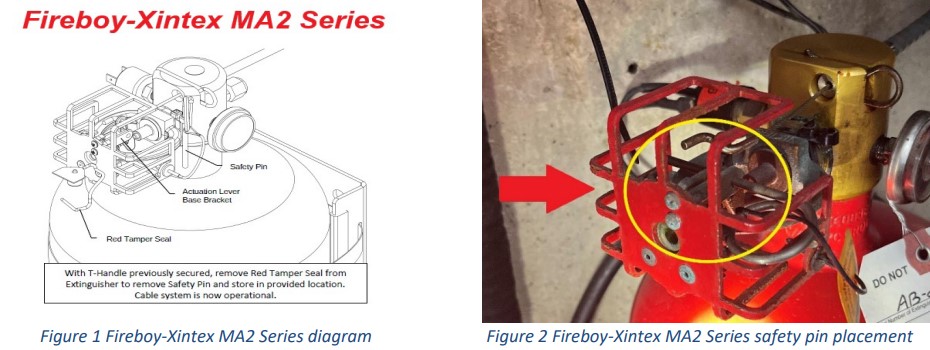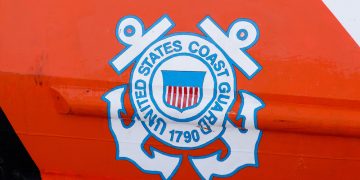The U.S. Coast Guard (USCG) has identified and raised alarm over a recurring safety concern involving fixed gas fire extinguishing systems on vessels.
According to the USCG alert, in multiple cases, safety pins have been left in the service or maintenance position after system servicing by certified technicians, rendering the system incapable of activating during an emergency.
Typically, there are two pins on the activation head of most fixed gas fire extinguishing systems. One is a safety pin, which prevents inadvertent discharge during transport or maintenance and which must be removed for the system to properly function. The other is a retaining cotter pin that holds the system’s manual pull cable in place. It is important to know the difference and to understand that the cotter pin must remain in place to allow for manual operation of the system.
Vessel owners and operators are reminded to take an active role in understanding the design and operation of their fire suppression systems and to verify their system is fully operational before getting underway.
Key Findings:
a) Recent Incident – Fireboy-Xintex MA2 Series System (February 2025)
- A small passenger vessel with a Fireboy-Xintex MA2 Series fixed-gas fire extinguishing system was serviced in accordance with 46 CFR 176.810
- The safety pin was inadvertently left in place which would prevent the system from activating.
- On this model, the pin must be inserted during servicing but removed after completion, either left hanging or placed in the affixed holder per the manufacturer’s manual.

b) Prior Incident – Sea-Fire NFD500 System (August 2024)
- A small passenger vessel with a Sea-Fire NFD500 system suffered an engine room electrical fire during which the Master attempted to activate the system from the helm but was unsuccessful.
- The safety pin had been left in the service position and prevented the system from activating.
- The fire was ultimately extinguished with a portable extinguisher.

Credit: USCG
The U.S. Coast Guard strongly recommends that vessel owners and operators:
- Review the owner’s manual for your specific system.
- Do not rely solely on service technicians – be actively involved to ensure your system is ready for operation.
- Verify proper safety pin placement immediately after maintenance and before getting underway.
- Verify glass ampule is intact and is full of liquid; if the ampule does not contain liquid, the system will be incapable of automatic activation.
- If you are uncertain about your system’s status, contact your servicing provider immediately.
- Be present during fire suppression system servicing and ensure you are familiar with your system’s operation.
- When conducting crew training in accordance with Title 46 Code of Federal Regulations (CFR) §185.420 (b)(1) or 46 CFR § 122.420 (b)(1), ensure that fixed-firefighting system maintenance and pin placement are covered topics.
- Consult your local U.S. Coast Guard Marine Inspector if your vessel is inspected and you need additional guidance.

































































